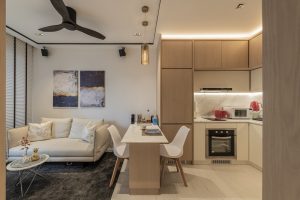Do you ever feel like something is missing in your home decor, but you just can’t put your finger on it? Adding a touch of nature through carefully chosen plants might be the perfect solution. In Singapore, where space can be limited and the urban environment dominates, incorporating plants into your home decor not only adds a refreshing touch of greenery but can also contribute to a more relaxed and inviting atmosphere. Whether you’re a seasoned plant enthusiast or a complete beginner, there are numerous ways to elevate your living space with the beauty of nature.

Choosing the Right Plants for Singapore’s Climate
When selecting plants for Singapore’s climate, it’s essential to consider the high humidity and consistent warm temperatures. Opt for species like Bird of Paradise (Strelitzia reginae) and Peace Lily (Spathiphyllum) that thrive in such conditions. These plants exhibit lush foliage and vibrant blooms, adding tropical flair to your home. Additionally, consider ferns such as the Boston Fern (Nephrolepis exaltata) known for their ability to thrive in humid environments, enhancing the aesthetic appeal of your space.
Incorporating Plants in Different Rooms
Consider the unique requirements of each room when integrating plants into your home decor, ensuring that the chosen species not only thrive in Singapore’s climate but also complement the specific lighting and humidity levels of the designated space. In living rooms, consider large plants like fiddle leaf figs for a statement piece. Bedrooms benefit from calming plants such as lavender or jasmine, while kitchens and bathrooms thrive with herbs like mint and basil.
Styling Tips for Using Plants in Home Decor
To create a harmonious blend of greenery and interior design, carefully select plant species that complement the aesthetic and ambiance of each room, ensuring they thrive in Singapore’s climate and suit the specific lighting and humidity levels of the designated spaces. Consider using low-maintenance options such as snake plants or pothos for low-light areas. Opt for fiddle leaf figs or monstera for well-lit spaces. Grouping plants in clusters can create focal points and add visual interest.
Maintenance and Care for Indoor Plants
For successful care and maintenance of indoor plants, it is crucial to understand the specific watering, fertilizing, and pruning requirements of each plant species, as well as to monitor for any signs of pests or diseases. Different plants have varying needs, so it’s important to tailor your care routine accordingly. Factors such as light exposure, humidity levels, and potting soil quality also play a significant role in the overall health and vitality of your indoor plants.
